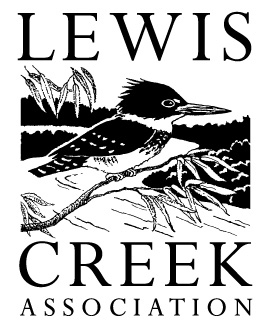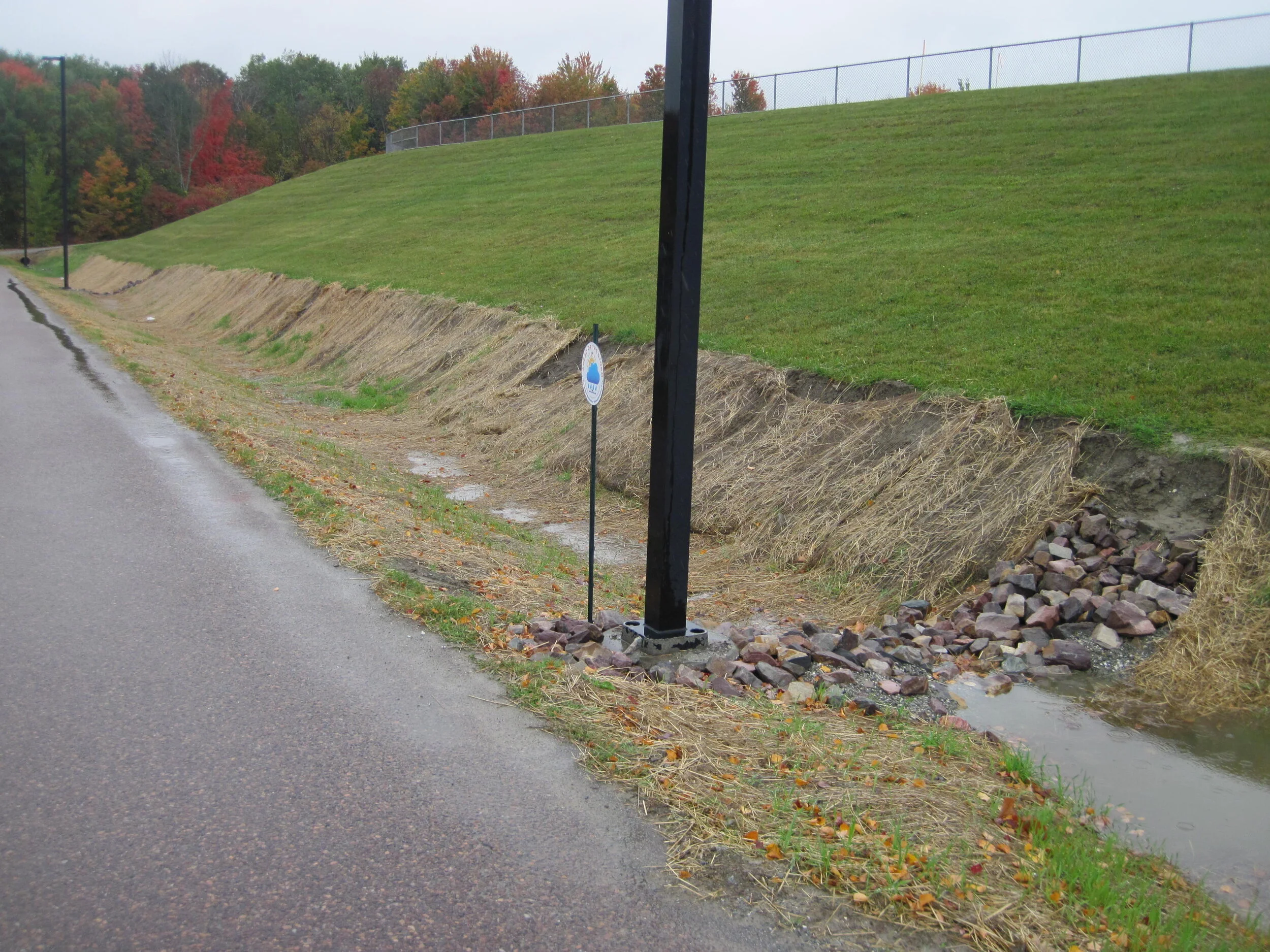Champlain Valley Union High School partnered with Lewis Creek Association (LCA) through its Ahead of the Storm (AOTS) program, to actively improve water quality of stormwater running off the school property and flowing to Lake Champlain. This marks the 5th year of a partnership between Champlain Valley School District and LCA to prepare school campuses as LCA’s AOTS stormwater resilience demonstration sites. Just before school began this fall, the swale off the north parking lot was improved. The bioretention (“rain garden”) areas in this swale will help clean water running from 4.9 acres of CVU’s campus, including 1.4 acres of impervious surface. As water runs off the parking lot and from the track/hill area, it enters a sediment forebay area which helps remove sediment. Then, it flows down the swale, where it is caught in bioretention areas, which include soil and a native grass and wildflower mix, to help remove phosphorus from the water, before it filters down into the underdrain pipe in the ground under the swale, removing nutrients. An overflow culvert was resized to meet resiliency goals for safe passage of large storms. Water then enters the stream, which flows into CVU’s fire/stormwater pond. This pond’s outlet then flows under Route 116, between the Carpenter-Carse library and gas station, under the road and beside the Bissonette Fields, then into Patrick Brook, which then empties into the LaPlatte River.
Completed Champlain Valley Union High School swale
The CVU swale prior to improvements.
Students at the school worked with the Lewis Creek Association, water resource engineers, and school staff to help identify areas where stormwater improvements could be made. The eroding swale off the north parking lot was identified as an important location to treat dirty water running off of paved surfaces, as well as to fix erosion that was taking place in the swale, carrying phosphorus with it.
Several students last year received a lesson on water quality through another LCA grant, and met with LCA staff and Jessica Louisos (a Water Resources Engineer at Milone & MacBroom) to develop project ideas for this swale improvement. This type of fix helps improve water quality in Patrick Brook and the LaPlatte River by slowing water down, spreading it out, and sinking it in to the ground (“the three S’s” that are central to LCA’s Ahead of the Storm program), as well as carrying more water that is expected with larger rainstorms due to climate change. You can learn more about the AOTS program at www.lewiscreek.org/ahead-of-the-storm.
All of the stormwater runoff from the CVU property flows into the LaPlatte River via one of two routes, then into Lake Champlain at Shelburne Bay. The LaPlatte River is impaired for bacteria (E. coli) from its mouth up to Hinesburg, and we hope to keep it from being classified as impaired for phosphorus. Nutrients like phosphorus can cause algal blooms (including harmful blue-green algae) in the lake, and can lead to fish die-offs. Chloride (which is in road salt, sodium chloride) is also bad for the environment, and can kill off plants. At some campus locations, runoff from the CVU roof, parking lots, driveways, and playing fields travels directly from an impervious surface to an aging pipe network with little to no treatment. Action on a community scale is critical to reduce the large amount of nutrient-rich stormwater directly entering the LaPlatte River, then Lake Champlain. You can learn more about the problem and what landowners can do to improve water quality in a brief 17-minute presentation LCA’s website at https://www.lewiscreek.org/water-quality-videos. Ahead of the Storm education materials can be found at https://www.lewiscreek.org/library. It is crucial that we all do our part to improve to water quality in small ways, in order to improve Lake Champlain’s water quality and beauty, and to protect the animals and plants that live in our rivers and streams.
If you have any questions about the project, please reach out to Kate Kelly, Program Manager for Lewis Creek Association, at lewiscreekorg@gmail.com or 488-5203.
This project was funded by an agreement awarded by the Environmental Protection Agency and by the Great Lakes Fishery Commission to the New England Interstate Water Pollution Control Commission in partnership with the Lake Champlain Basin Program. NEIWPCC manages LCBP’s personnel, contract, grant, and budget tasks and provides input on the program’s activities through a partnership with the LCBP Steering Committee. The viewpoints expressed here do not necessarily represent those of NEIWPCC, the LCBP Steering Committee, GLFC, nor does mention of trade names, commercial products, or causes constitute endorsement or recommendation for use.



